3 Easy Ways to Insert Data while Charting with PlotSet

When charting in PlotSet, the first thing you need to do is insert your data. Let's review the steps you should follow:
In the charting area, hit the "Change Data" button.
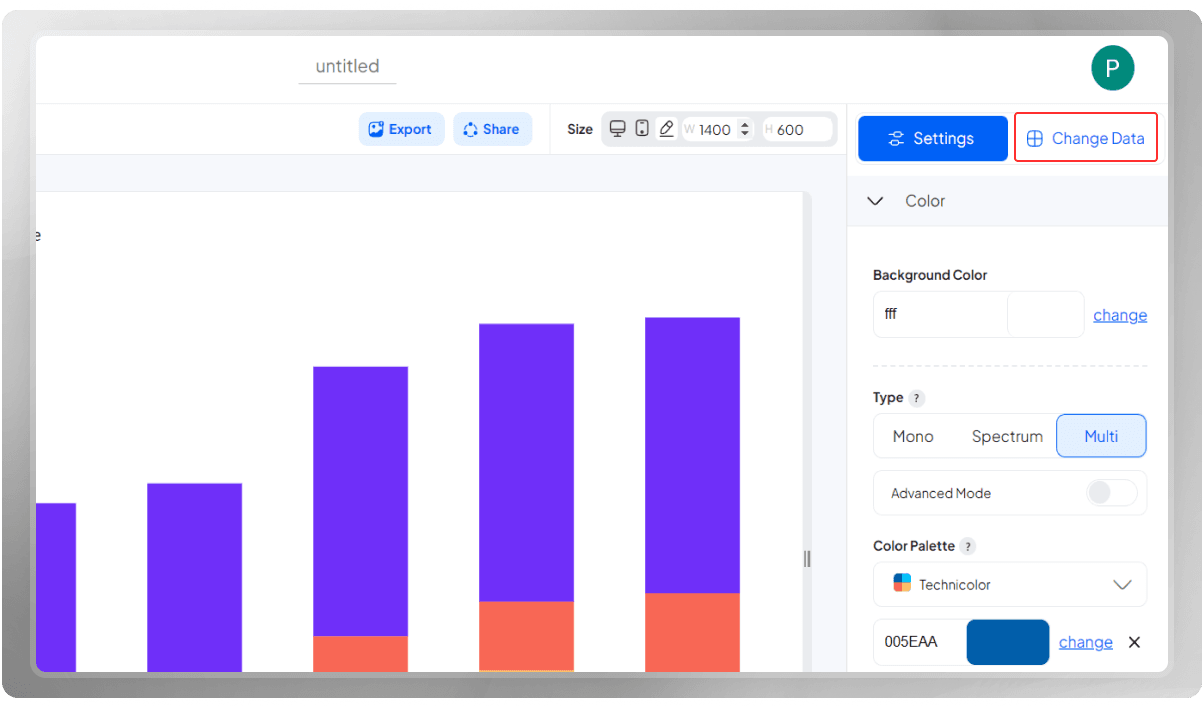
Now, you may insert your data in 3 different ways.
1. Insert data manually
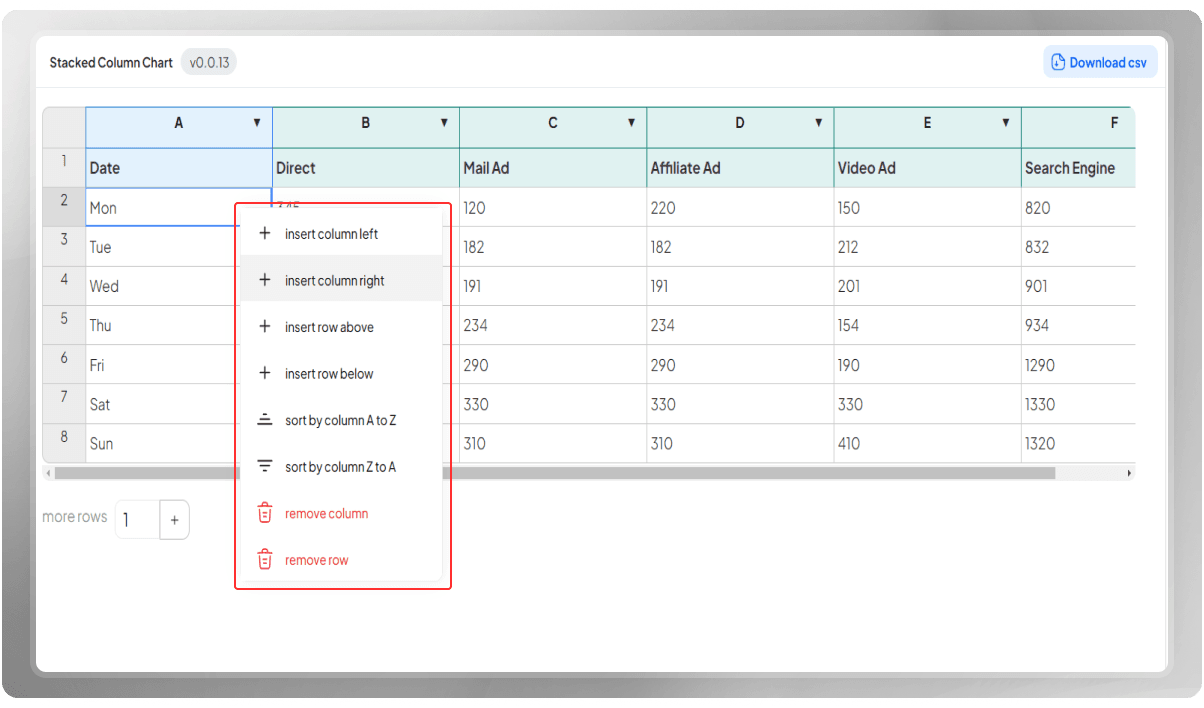
You can enter your data here manually as you do so when filling in Google Sheet cells. This method would be suitable when dealing with a limited number of data points. As you probably guessed, entering data manually would not be practical for huge data sets.
Right-click on each cell to see the customization options, which enable you to add columns or rows, sort the columns, or delete the extra ones.
2. Upload Data Sheet File
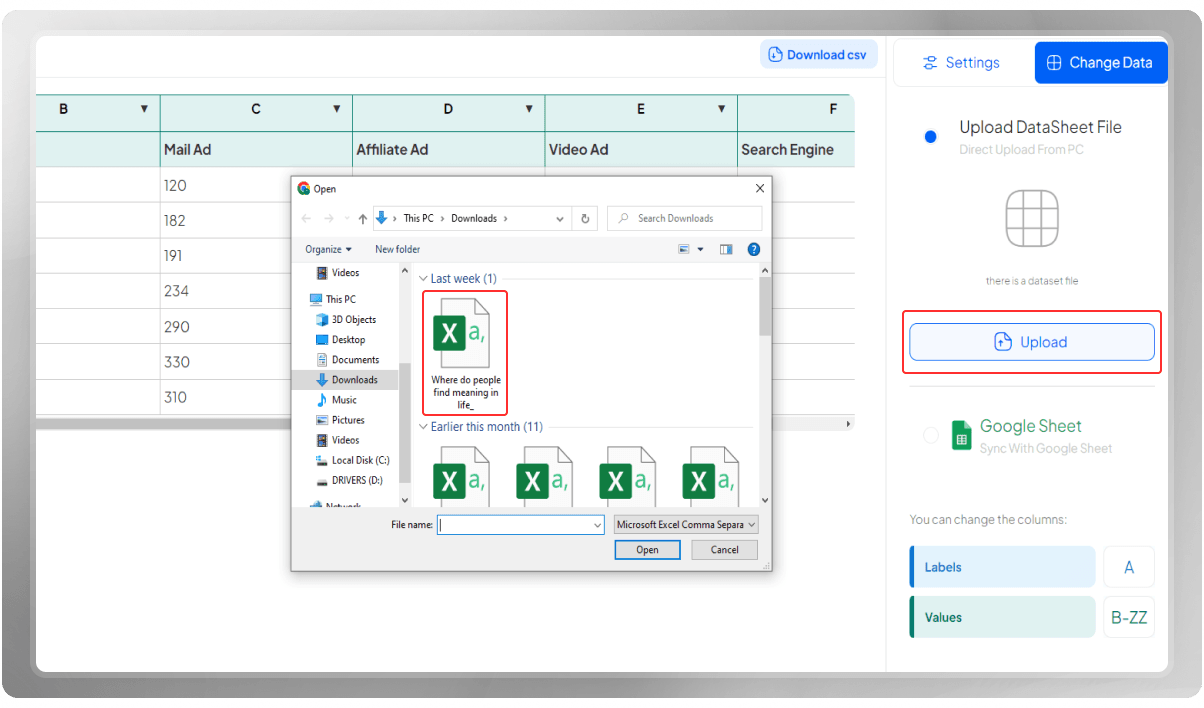
You can directly upload a Google Sheet file or a CSV from your PC. Just choose your file and hit "Upload."
3. Import Data from Online Google Sheet
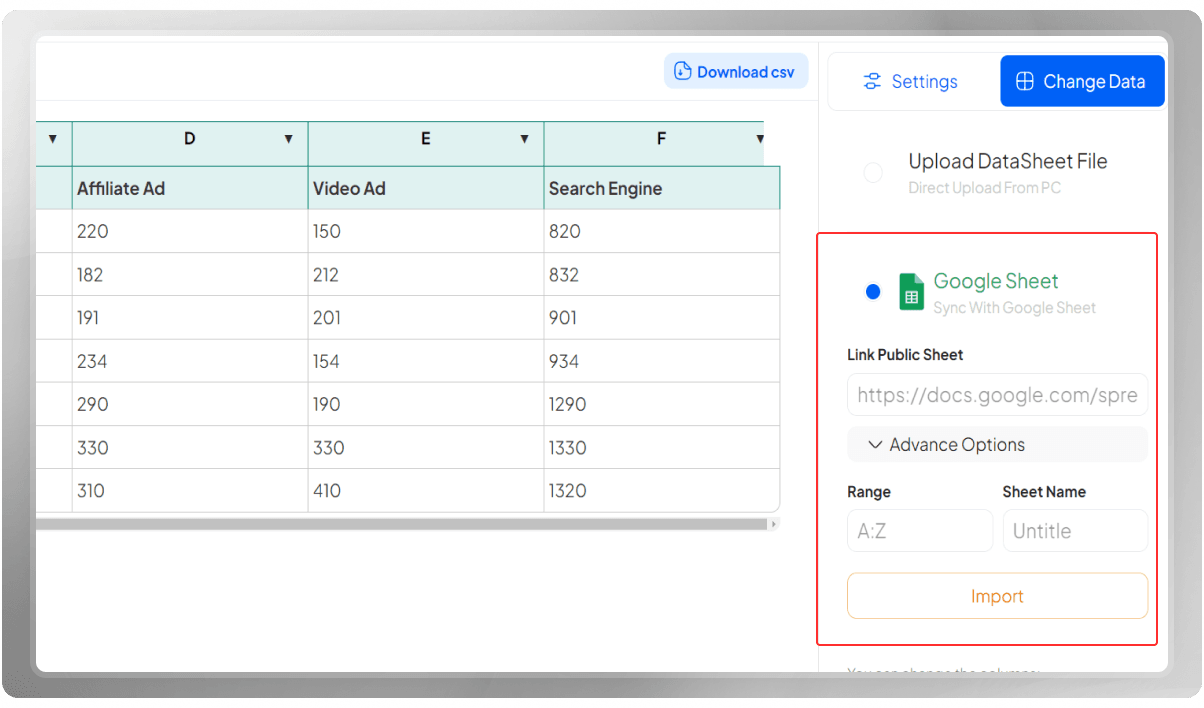
In this method, copy-paste the link to your Google Sheet in the right field and then import your data. Make sure to enable general access to "Anyone with the link."
Note: In case your Google Sheet contains more than one tab, make sure to write the name of that tab here in the Advanced Options.
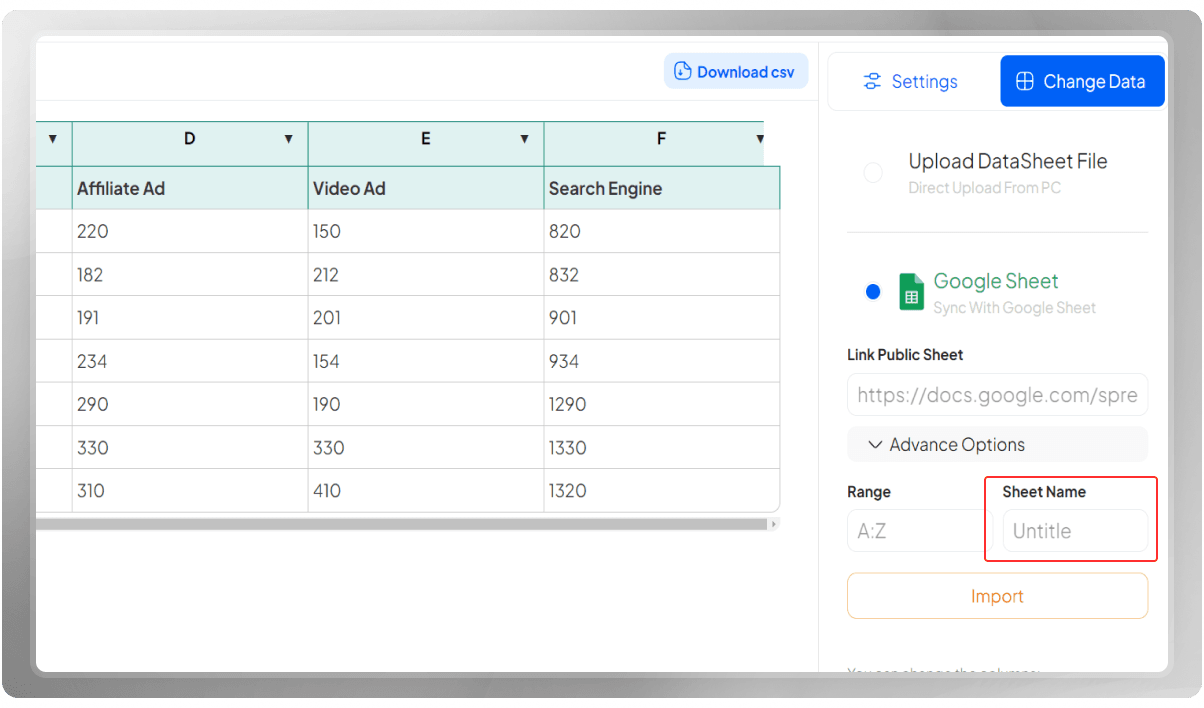
If you wish to display specific columns in your data sheet, mention the column names in the "Range" field.
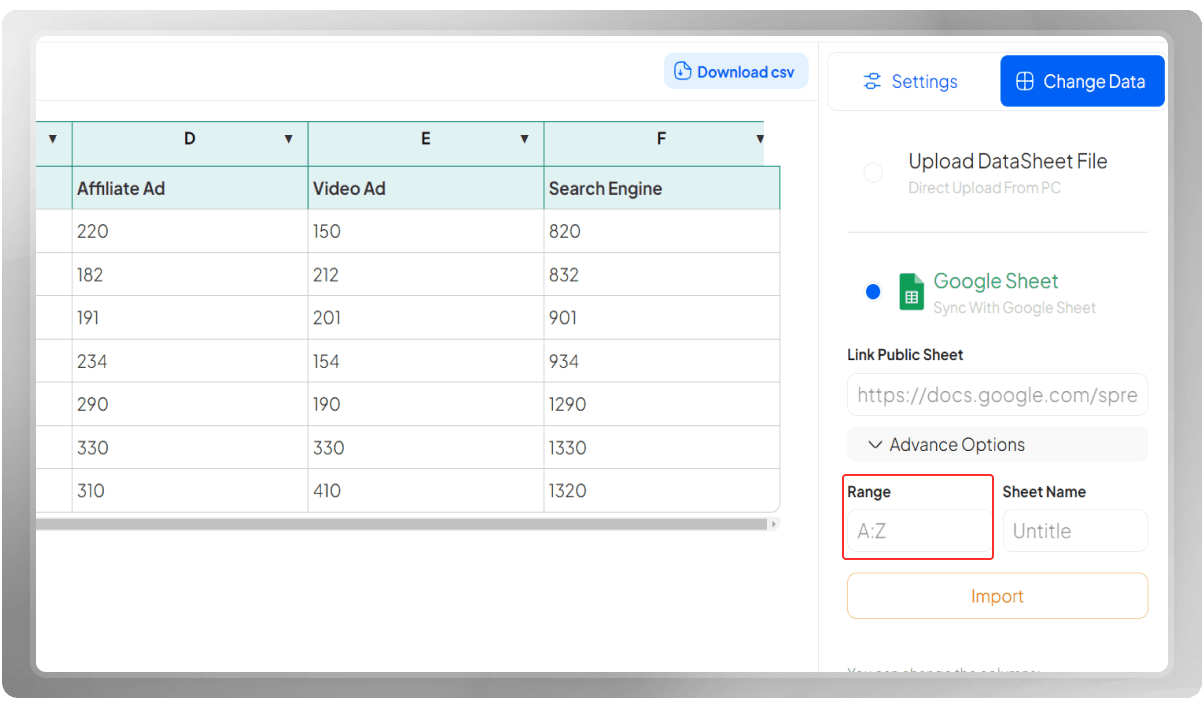
Bonus point
In certain charts, like Bar Chart and Split Bars, where you have the option to add pictures to the template, you should insert the links to the pictures in a separate column. Then, write the name of that column in the "Images" field. Afterward, in the "Value" field, write the column number where the dataset starts (here, it starts from Column C).
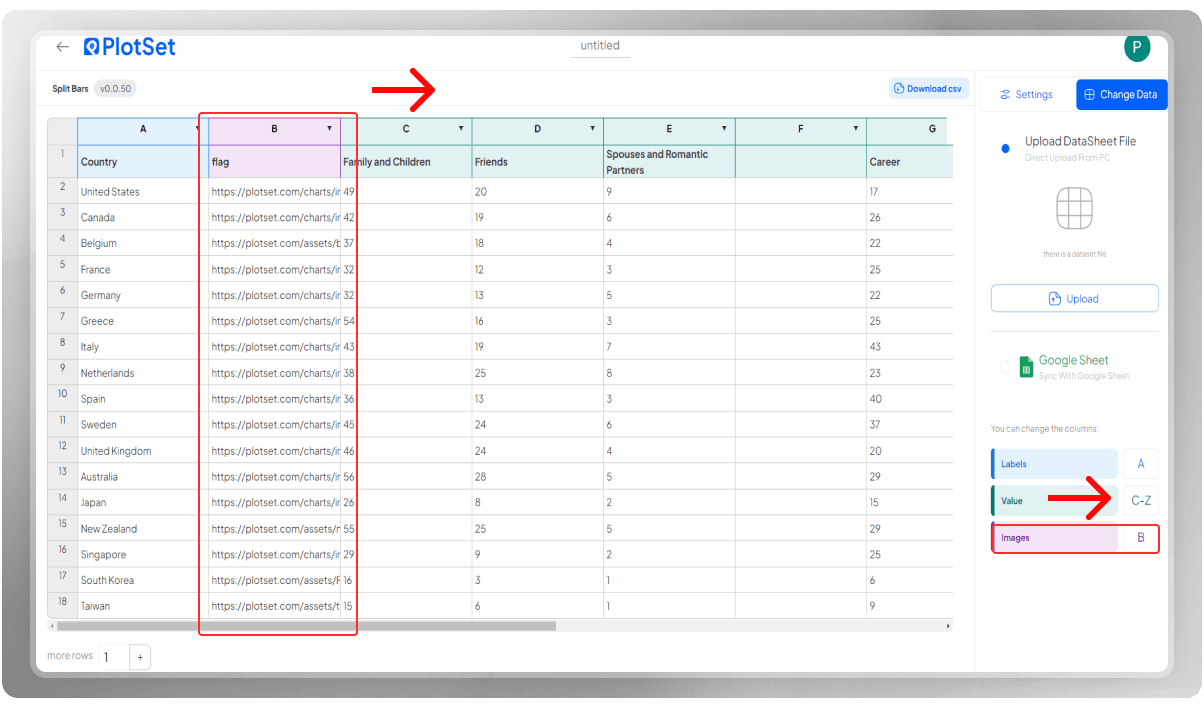
Knowing these simple tricks helps you navigate your data more efficiently in the plotting area.
If you like to know more about data visualization, read the following blog: Why Data Visualization Is Important
